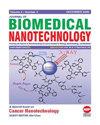Xklp2 靶蛋白对糖尿病大鼠心肌细胞的抗凋亡作用
IF 2.9
4区 医学
Q1 Medicine
引用次数: 0
摘要
本研究探讨了 TPX2 通过调节 Akt/FoxO1 信号通路减轻糖尿病心肌病的潜力。使用链脲佐菌素诱导大鼠发生糖尿病心肌病,并通过超声心动图和 HE 染色评估心脏结构和功能。心肌组织中 TPX2 的表达是通过 qRT-PCR 检测的。使用慢病毒在心肌组织中特异性过表达 TPX2,然后重新评估心脏结构和功能。免疫组化染色用于评估 Caspase3 的表达。在糖尿病心肌病组,大鼠心脏的结构和功能明显受损,心肌组织中 Caspase3 的表达增加。相反,过量表达 TPX2 能有效改善心脏结构和功能,同时抑制 Caspase3 的上调。在用高糖培养的 H9C2 细胞中,TPX2 的过表达抵消了细胞活性的降低和细胞凋亡率的增加。它还能下调细胞凋亡相关因子(Bax、Caspase3、Caspase9)的 mRNA 水平,促进抗凋亡因子 Bcl-2 mRNA 的表达。TPX2 的过表达抑制了 Caspase3 和 Caspase9 的活性,上调了 Akt mRNA 和蛋白的表达,抑制了 FoxO1 mRNA 和蛋白的表达。这表明 TPX2 可调节 Akt/FoxO1 信号通路,减少高糖诱导的细胞凋亡和心肌细胞毒性。这些发现为糖尿病心肌病的治疗提供了潜在的药物靶点和治疗策略。本文章由计算机程序翻译,如有差异,请以英文原文为准。
Antiapoptotic Effect of Target Protein for Xklp2 on Diabetic Rat Cardiomyocytes
This study investigates the potential of TPX2 in mitigating diabetic cardiomyopathy by modulating the Akt/FoxO1 signaling pathway. Diabetic cardiomyopathy was induced in rats using streptozotocin, and heart structure and function were assessed through echocardiography and HE staining.
TPX2 expression in myocardial tissue was measured using qRT-PCR. Lentivirus was used to overexpress TPX2 specifically in myocardial tissue, followed by reassessment of cardiac structure and function. Immunohistochemical staining was employed to evaluate Caspase3 expression. In the diabetic
cardiomyopathy group, rat hearts exhibited evident damage in structure and function, with increased Caspase3 expression in myocardial tissue. Conversely, TPX2 overexpression effectively improved heart structure and function while inhibiting Caspase3 upregulation. In H9C2 cells cultured with
high glucose, TPX2 overexpression counteracted reduced cell activity and increased apoptosis rates. It also downregulated the mRNA levels of apoptosis-related factors (Bax, Caspase3, Caspase9) and promoted anti-apoptotic factor Bcl-2 mRNA. TPX2 overexpression inhibited Caspase3 and Caspase9
activities, upregulated Akt mRNA and protein expression, and inhibited FoxO1 mRNA and protein expression. This suggests that TPX2 may regulate the Akt/FoxO1 signaling pathway, reducing apoptosis and cardiomyocyte toxicity induced by high glucose. These findings offer potential drug targets
and therapeutic strategies for diabetic cardiomyopathy treatment.
求助全文
通过发布文献求助,成功后即可免费获取论文全文。
去求助
来源期刊
CiteScore
4.30
自引率
17.20%
发文量
145
审稿时长
2.3 months
期刊介绍:
Information not localized

 求助内容:
求助内容: 应助结果提醒方式:
应助结果提醒方式:


